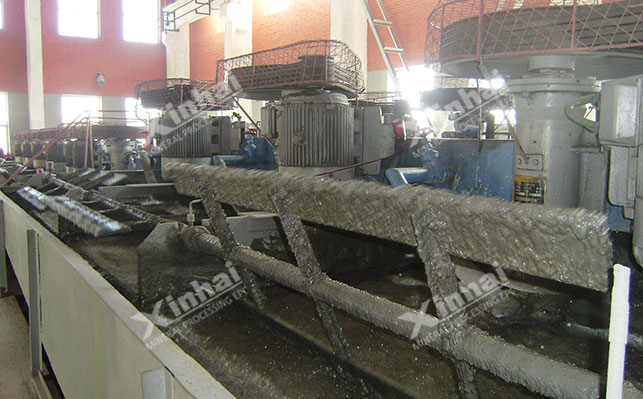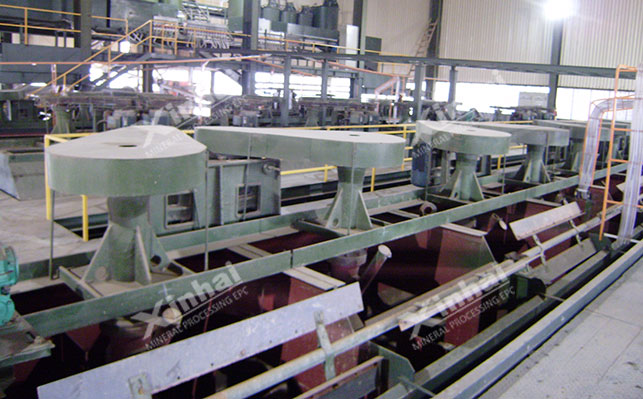
15311826613
Click to add WeChatIn recent years, various minerals have basically developed in the direction of poor, fine and difficult to beneficiate, and copper-lead ore is no exception. With large-scale mining, resources are becoming increasingly scarce, especially the flotation separation of ores containing copper and lead minerals is more difficult. For floatation separation of copper sulfide and lead ore, the commonly used beneficiation processes are: copper-lead mineral priority flotation process, copper-lead mineral mixed flotation tailings-mixed concentrate priority flotation separation process and equal flotation process. Let's learn about it together!
Prioritized flotation separation of copper-lead ore is mainly based on the floatability of sulfide minerals such as copper and lead in the ore, using a targeted reagent system to float and separate them from the slurry in turn, and obtain separate concentrates and abandoned tailings respectively.

This method is easy to control and easy to obtain qualified concentrate. However, the beneficiation process is long, the flotation time is long, and the types of drugs used are many and the dosage is large.
This method is to first float copper and lead minerals simultaneously to obtain mixed concentrate, and then perform priority flotation separation or partial flotation separation on the mixed concentrate to select copper concentrate and lead concentrate respectively.
The mixed-preferential flotation process can effectively save grinding costs, reduce flotation machine wear and the amount of flotation reagents used, but in this method, reagents will remain in the concentrate after flotation, and the surface of the ore particles will be covered with a collector film, which often makes it difficult to selectively suppress the separation of one mineral from another, and it is not easy to obtain better sorting indicators, which limits its application.

This method can only be applied after the mixed concentrate is de-doped with sodium sulfide, activated carbon or other methods. Generally, the fully mixed flotation process is suitable for processing polymetallic ores or relatively poor polymetallic sulfide ores in which useful minerals are unevenly embedded, or densely intergrown with each other, or one useful mineral is finely embedded in another useful mineral, and their intergrowths are coarsely embedded in the gangue (which constitutes the majority of the ore).
Isotropic flotation of copper-lead ore is to select copper and lead minerals with similar flotability into mixed concentrates, and then separate and flotate. For example, the easily floatable copper and lead sulfide minerals and the more difficult to float zinc and sulfur minerals are selected into copper and lead mixed concentrates and zinc and sulfur mixed concentrates respectively, and then copper and lead are separated and zinc and sulfur are separated, or zinc and sulfur minerals are suppressed, and copper and lead minerals are mixed and floated to obtain copper and lead mixed concentrates, and then copper and lead are separated and floated, and zinc and sulfur minerals are recovered from the tailings to obtain copper, lead, zinc, and sulfur concentrate products respectively.

This flotation method has the advantages of both priority flotation and mixed flotation processes. The conditions for flotation separation are easy to control, and the process can avoid the activation of easy-floating zinc minerals and the strong inhibition during subsequent separation, and can also avoid the inhibition of difficult-floating zinc minerals and the strong activation during subsequent flotation. However, this method takes a long time to flotate, and the process operation is more complicated.
The above is an introduction to the flotation process of copper-lead ore. In actual ore dressing plants, no matter which process is used, they will face the problem of separation of copper, lead, zinc and sulfur. Depending on the nature of the ore, the flotation process plan is also different. It can be analyzed through ore dressing tests, and a suitable copper-lead flotation separation process can be designed according to the actual situation of the ore.